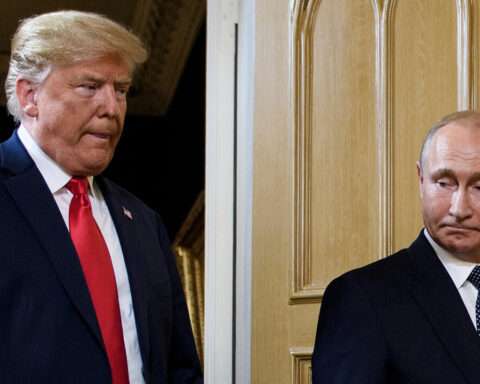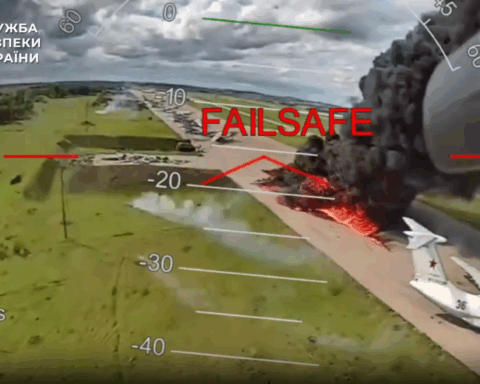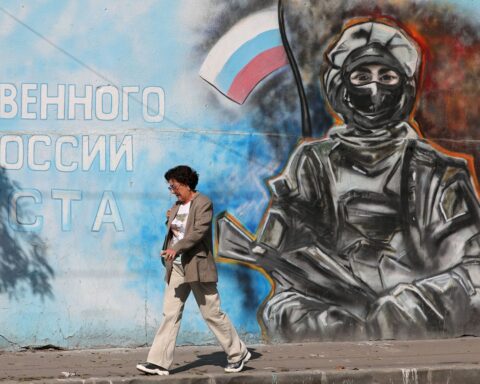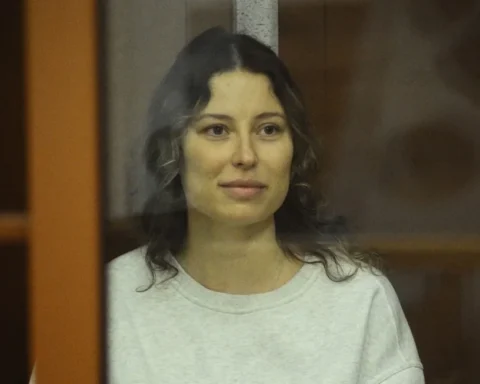Putin’s Strategic Playbook—Understanding what Vladimir Putin really wants is a complex puzzle that has captivated global leaders, analysts, and the public alike. As the Russian president navigates an intricate web of geopolitical strategies, his actions and statements often seem contradictory—supporting peace in one breath while escalating conflict in the next. From his stance on Ukraine to his broader vision for Russia’s role in the world, deciphering his motives requires peeling back layers of rhetoric, historical context, and power dynamics. This article explores Putin’s ambitions through his public statements, military moves, and diplomatic maneuvers, offering insights into the mind of one of the world’s most enigmatic leaders.
It’s March 22, 2025, and the world is watching Putin closely as tensions with Ukraine and the West persist. Recent developments, including his interactions with U.S. President Donald Trump over ceasefire proposals, have only deepened the mystery. Is he seeking a lasting peace, or is he stalling for time to strengthen Russia’s position? By examining his past, his current strategies, and the reactions of those around him, we can begin to unravel what drives Putin and what he truly aims to achieve.
A Glimpse into Putin’s Past
To understand Putin’s present, we must first look to his past. A former KGB officer, Putin rose through the ranks of Russia’s intelligence apparatus during the Soviet era, an experience that shaped his worldview. The collapse of the Soviet Union in 1991 left a lasting mark, with Putin famously describing it as the “greatest geopolitical catastrophe of the century.” This sentiment fuels his desire to restore Russia’s status as a global superpower, a goal that permeates his policies and rhetoric. Outlets like CNN have noted that Putin and his inner circle, many of whom also hail from the KGB, see the world through a lens of confrontation with the West, particularly the United States.
His 25-year tenure as Russia’s leader—alternating between president and prime minister—has been marked by efforts to centralize power and suppress dissent. The BBC has highlighted how Putin’s control over Russian media and political institutions allows him to shape narratives that bolster his image as a defender of Russian sovereignty. This historical context suggests that his ambitions extend beyond mere territorial gains; they are rooted in a quest for legitimacy and dominance on the world stage.
The Ukraine Conflict: A Window into His Goals
The ongoing war in Ukraine, now in its third year as of 2025, serves as a critical lens for understanding Putin’s intentions. Fox News reports that Putin recently agreed to a 30-day moratorium on strikes against Ukraine’s energy infrastructure following talks with Trump, yet he stopped short of committing to a full ceasefire. This selective pause hints at a tactical approach—easing pressure in one area while maintaining leverage elsewhere. Analysts cited by The New York Times argue that Putin’s visit to the Kursk region, where Russian forces have reclaimed territory from Ukraine, underscores his intent to negotiate from a position of strength.
Ukrainian President Volodymyr Zelensky has accused Putin of preparing to reject broader peace talks, a view echoed by CNN, which suggests that Putin’s conditions—like halting all Western arms to Ukraine—are designed to weaken Kyiv’s defenses. Meanwhile, Putin insists he wants to address the “root causes” of the conflict, a phrase the BBC interprets as code for dismantling Ukraine’s sovereignty and blocking its path to NATO and the European Union. This duality—offering peace while imposing untenable demands—reveals a strategy aimed at consolidating control rather than ending hostilities outright.
How to Understand What Putin Really Wants
Decoding Putin’s true desires requires looking beyond his words to the patterns in his actions. He often frames Russia as a victim of Western aggression, a narrative that justifies military interventions and rallies domestic support. NBC News points out that Putin’s recent statements about supporting a ceasefire “in principle” come with caveats that ensure Russia retains the upper hand, such as demanding the “demilitarization” of Ukraine. This suggests his goal isn’t peace in the conventional sense but a reconfiguration of power that elevates Russia’s influence.
Putin’s diplomatic engagements offer further clues. His cautious response to Trump’s ceasefire push, as detailed by CNN, indicates he’s testing the new U.S. administration’s resolve. By agreeing to limited concessions—like the energy strike pause—while pushing for sweeping conditions, Putin appears to be playing a long game. The New York Times notes that his insistence on halting foreign aid to Ukraine aligns with his broader aim of isolating Kyiv from its allies, weakening its ability to resist Russian pressure over time. Understanding what Putin really wants, then, means recognizing his blend of immediate tactics and grand strategic vision.
The Global Stage: Russia’s Place in Putin’s Vision
Beyond Ukraine, Putin’s ambitions encompass a reimagined global order where Russia rivals the United States and China. CNN’s analysis of his rejection of the G8 in favor of “higher geopolitical aims” reflects his disdain for playing second fiddle to Western powers. He envisions Russia as an indispensable player, a counterweight to NATO and a leader among nations skeptical of U.S. dominance. The BBC reports that his actions in the Baltics—where NATO’s eastern flank fears Russian provocation—signal a willingness to challenge the alliance’s unity, especially under a Trump administration perceived as less committed to NATO.
Fox News has highlighted Putin’s demand for “ironclad” guarantees that Ukraine will never join NATO, a condition that would cement Russia’s sphere of influence in Eastern Europe. This aligns with his rhetoric of “exceptionalism,” a belief that Russia deserves a starring role in world affairs. Yet, his approach isn’t purely confrontational; by engaging with Trump, Putin shows a pragmatic side, willing to exploit diplomatic openings to advance his agenda without firing a shot.
Domestic Drivers: Power and Popularity at Home
Putin’s foreign policy is inseparable from his domestic priorities. Maintaining power in Russia, where he faces little organized opposition, hinges on projecting strength and delivering victories. The BBC notes that while some Russian surveys in 2025 show growing public support for peace talks, Putin remains the ultimate decision-maker, unbound by popular opinion. His televised addresses, praised by Russian media for their firmness, reinforce his image as a resolute leader, a tactic Fox News describes as stalling Western initiatives to buy time for military gains.
Economic factors also play a role. Sanctions and the war’s cost have strained Russia’s economy, yet Putin’s willingness to endure isolation—as CNN reports—suggests he prioritizes geopolitical clout over immediate prosperity. By framing the West as the aggressor, he justifies these sacrifices to a populace conditioned to see Russia as under siege. This domestic lens reveals that what Putin wants abroad is often a means to secure his grip at home.
The Art of Ambiguity: Putin’s Strategic Playbook
Putin’s knack for ambiguity keeps the world guessing, a deliberate strategy that maximizes his leverage. The New York Times describes his response to Trump’s ceasefire proposal as a masterclass in stalling—offering enough to keep talks alive but not enough to commit. This “art of the no deal,” as CNN puts it, allows him to exploit divisions among his adversaries while advancing Russia’s position. Whether it’s a pause in energy attacks or a prisoner exchange, each move is calculated to maintain momentum without yielding ground.
This unpredictability frustrates leaders like Zelensky and Trump, who seek quick resolutions. NBC News suggests that Putin’s “nuances”—his term for the conditions attached to peace—mask a refusal to cede control. By keeping his true intentions opaque, he ensures Russia remains a wildcard, capable of shifting from diplomacy to aggression as circumstances dictate. Understanding this playbook is key to anticipating his next move.
Conclusion: A Leader Defined by Control
Vladimir Putin’s true wants boil down to control—over Ukraine, over Russia’s borders, and over its place in the world. He seeks a legacy as the leader who revived Russia’s greatness, even if it means prolonging conflict or defying the West. His blend of historical grievances, tactical cunning, and domestic imperatives paints a picture of a man less interested in peace for its own sake and more in a victory that redefines the global balance.






